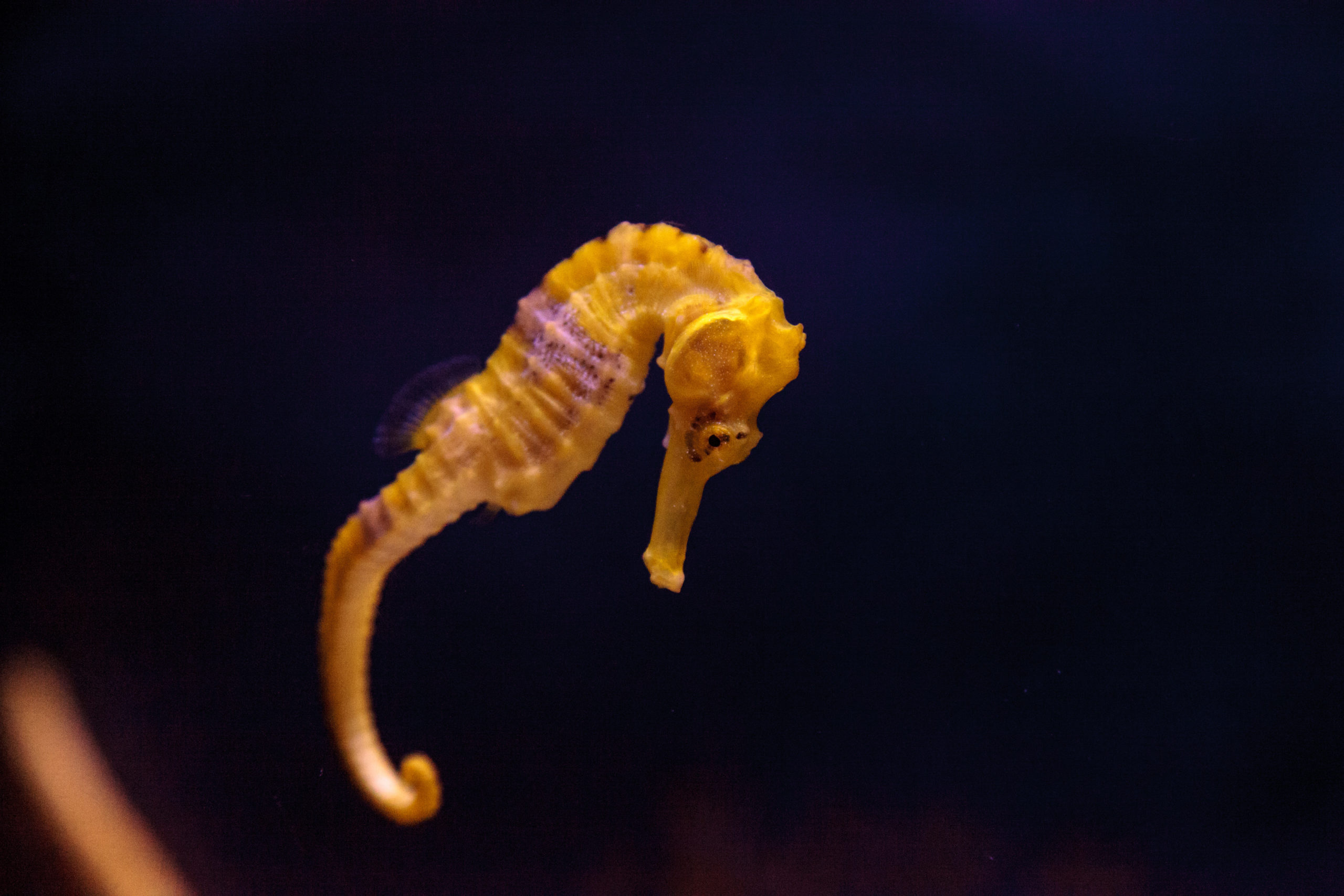Seahorses are enchanting.
Most of us have only seen the stuffed ones that double as carnival prizes or pictures of these elusive creatures that have a mythical quality about them.
If you’ve paddled the Chesapeake Bay, it’s unusual but not impossible to see a seahorse, says Rachel Dixon, a Ph.D. student in the Department of Fisheries Science at Virginia Institute of Marine Science, who calls them “masters of camouflage.”
“Because they prefer saltier waters, you’re going to be more likely to see them in the southern half of the Bay, in the middle to lower Bay,” Dixon says. “They really like to hang out in seagrass beds or in underwater vegetation. You’re more likely to find them in seagrass beds in the summer and they’ll move into slightly deeper waters in the winter.”
If you’re crabbing, you might spot a seahorse grabbing onto a pot with its tail. Seahorses aren’t great swimmers and look somewhat clumsy doing so, but they are able to use their tails to grip objects much in the same way our fingers do.
While 54 species of seahorses exist, only one is native to the Chesapeake Bay — the lined seahorse. They’re 4 to 5 inches in length and can be pale yellow, green or black with dark lines on their head or body.
Lined seahorses live about four years, “and they don’t have any teeth,” Dixon says. “They suck up their prey through their long mouths. They’ll feed on tiny crustaceans like small shrimp and plankton.”
Considering their size, seahorses have ravenous appetites, feasting on as many as 3,000 crustaceans a day.
Unlike every other species, the brunt of the reproductive cycle is not on the female to bear. Seahorse “couples” undergo a unique mating ritual that includes mirroring the other’s movements alongside each other. They lock tails, as it takes perfect alignment for reproduction to occur. The female eggs go into the pouch on the male’s body — as many as 300 baby seahorses are typically born within three weeks. Seahorses are monogamous — they stick together for life.
Males labor with actual contractions. No other vertebrates involve male pregnancy. The male is ready to mate again after delivering all the babies, which are independent from the start despite being only a quarter of an inch long.
Because seahorses are covered in bony plates, they’re not appetizing to other fish, Dixon says, which prolongs their life.
Seahorses are dependent on the amount of seagrasses in their habitat. Massive rainfall in 2018 and 2019 forced a decline in seagrass acreage in the Bay, but over the last few years, the seagrasses have started to come back.
Like the oyster, seahorses are important to keeping the Chesapeake Bay healthy. They help absorb excess nutrients and trap sediment and sand that would otherwise cloud the water.
“They’re important for reducing erosion by slowing water currents,” Dixon says.
Don’t confuse the seahorse with the pipefish, which looks like an elongated seahorse. Both use their dorsal fins to move around in the water and hunt for tiny crustaceans, but pipefish are much longer and almost look like snakes. Like seahorses, they use camouflage to stay safe.
If you’re lucky to spot one during a paddle, count yourself among the lucky.
Want to plan a paddle? Start on the Middle Peninsula and map out your trip here. Then visit Virginia’s Coastal Wilds to get more details about other activities in that region.

